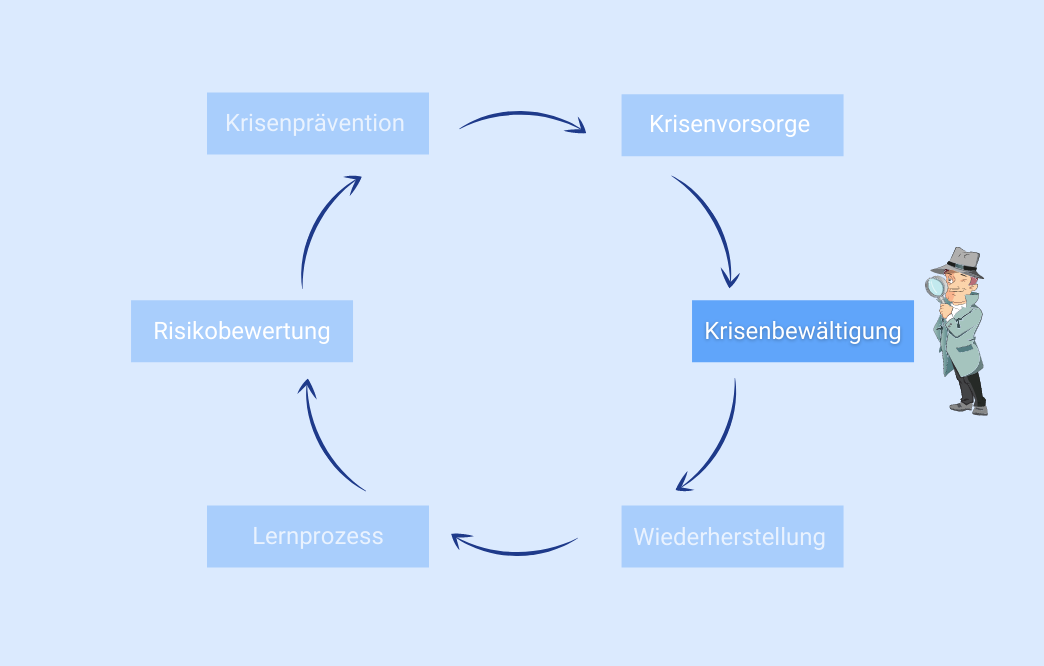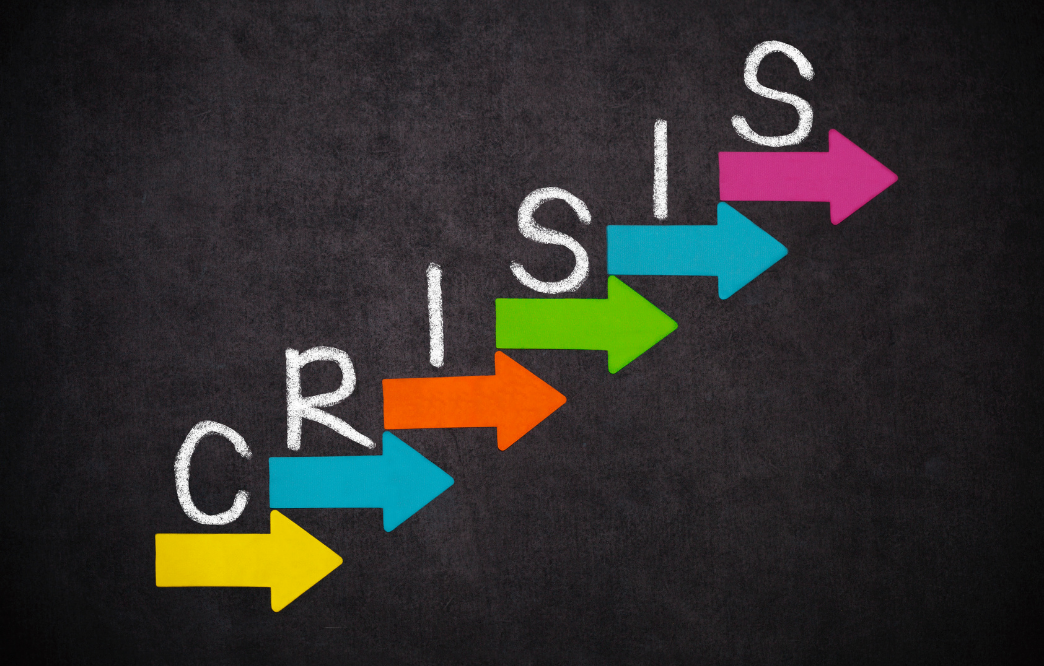Table of contents
Crises are inevitable and can cause potentially devastating damage that affects all areas of an organisation. When a crisis actually occurs, the crisis preparedness measures discussed in Part 5 of our blog series probably did nothing. What to do now? How do you proceed in a targeted and planned way? How do you organise crisis management and how do you communicate the crisis? We will answer these and other questions in this article.
Let’s first ask ourselves the most obvious:
What is crisis management (response)?

“Crisis management is the core task of crisis management and takes place through measures such as combating the causes of the crisis, mitigating the effects of the crisis and eliminating damage that has already occurred. “ (Source). In crisis situations, the usual behavioural patterns and strategies are usually not sufficient to manage a crisis. The same applies to existing knowledge, experience and resources.
Identification and framing of a crisis
Whether and to what extent a situation is considered a crisis depends on the beliefs and perceptions of the decision-makers, i.e. the framing or presentation of the problem. The way a crisis is labelled is crucial in setting the tone for crisis management. Crisis stakeholders often try to frame it according to their interests. This framing may involve the conscious or unconscious selective use of data to favour a particular interpretation, or to raise questions about who is to blame.
Questions such as the following can help the crisis manager identify a crisis:
- How did the crisis arise?
- What was the key event that turned the normal situation into a crisis?
- Were signals sent?
- Where did the initial signals come from, how were these signals interpreted and was an alarm raised?
- Was there an existing early warning system to detect the crisis?
- Who first defined the situation as a crisis?
If it is clear that a company or organisation is in crisis, action must be taken, and quickly. After all, it is not only a matter of safeguarding operational processes, but also of reliably protecting human lives and the environment. In order to remain able to act, the next step is to organise crisis management.
Organise crisis management

At the strategic level, there are five decisive criteria for crisis decisions:
- informing the public quickly
- rapid, meaningful results from the crisis manager
- decentralisation of operational decision-making
- monodisciplinary management instead of multidisciplinary coordination
- immediate strategic decision making
The choice of crisis management strategy depends on how high the risk is and how much time is available. If the risk is low and there is plenty of time, one can allow oneself the luxury of making an analytical comparison between several predefined options or even designing a new option. The less time one has and the higher the risk, the better it is to rely on predefined procedures or plans.
The clear recommendation is to have a central core for any crisis management team. But a technical crisis, for example, requires different professionals than a financial crisis. In any case, there is no optimal organisational form for crisis management. Rather, a crisis organisation should be designed taking into account the characteristics and context of the given setting. In any case, a crisis requires leadership. And leadership requires familiar faces and clear responsibilities.

Crisis communication
Crisis communication is a multi-layered concept and basically concerns all phases of crisis management, but plays an overriding role in crisis management. Thus, in the early phase, everything focuses mainly on the flow of information and channels within the organisation, with the public as well as other stakeholders.
The most important elements of crisis communication include:
Early warning as crisis communication
Early warning](/en/blog/what-is-crisis-management-part-5-crisis-preparedness/), which we have already learned about in the context of crisis preparedness, refers to the timing of the warning of a potential problem that is intended to help prevent or mitigate harmful consequences or at least create scope for preparatory or mitigating measures, such as evacuation or preparation of the necessary equipment for an early response.
Coordination and communication with networks
Often crises have to be managed by many decision-makers working closely together. And this can only be done with good communication. An integrated monitoring and information system helps to ensure that the data collected is properly shared, analysed and processed, and that all relevant information is made available.
External crisis communication
Communication with the media, external stakeholders and the public is important to warn of and protect against the consequences of a crisis, as well as to prevent or minimise reputational damage. This requires first and foremost the establishment of a crisis communication team that agrees on a communication plan, ensures the coherence of the information provided and coordinates the message between the different departments.
Internal crisis communication
How management communicates with its staff also plays a major role within an organisation. Here, similar rules apply to the crisis manager in terms of communication as they do for external crisis communication.
Crisis communication with GroupAlarm
With our web-based alerting and communication platform GroupAlarm, you have the right tool for all areas of crisis management. In the event of a crisis, you can quickly and reliably alert and coordinate employees, external specialists, your crisis management team, emergency services or other key persons. Manual or automated triggering paths and the coupling to third-party systems as well as the definition of your own processes provide you with the possibility to design your alerting completely flexibly. GroupAlarm supports the communication channels SMS, call (landline and mobile), e-mail, alerting via app and M2M pager. The alarmed persons can give feedback via all these means of communication. In addition, a separate messenger in the app offers the possibility to exchange information with each other in accordance with data protection regulations.
Crisis management in brief
The main task of every crisis manager in crisis management is to organise the crisis management strategy as well as crisis communication. The latter requires the rapid and reliable notification of many people in order to react quickly in the event of a crisis. This includes early warning, coordination of different actors and internal as well as external communication. The web-based crisis management tool GroupAlarm helps to keep your crisis management processes firmly under control.
Click here for the next part of the series - Restore.

